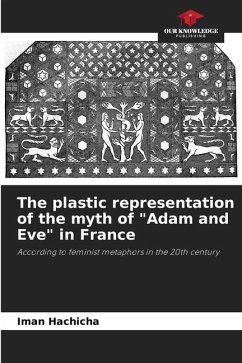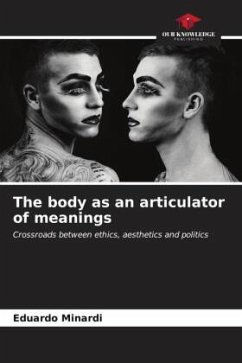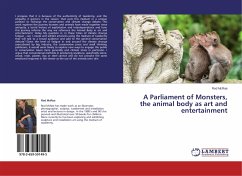
Representation of the Body in Polish Art after 1989
Towards a history of Polish art after 1989
Versandkostenfrei!
Versandfertig in 6-10 Tagen
32,99 €
inkl. MwSt.

PAYBACK Punkte
16 °P sammeln!
The book focuses on representations of the body incontemporary Polish art. It explores the approach ofartists towards the subject of individuality;specifically, and investigates the gendered body asmaterial for art. The central claim is that artproduced in Poland after 1989 is a documentation of aprocess the process of the reestablishment of artwithin the nation.Analyzing works of art produced byvarious Polish artists after 1989, the author provesthat they use the body as a medium for recording thechanging condition of the individual in Poland. Worksby Kozyra, Kulik, ebrowska and mijewski are ...
The book focuses on representations of the body in
contemporary Polish art. It explores the approach of
artists towards the subject of individuality;
specifically, and investigates the gendered body as
material for art. The central claim is that art
produced in Poland after 1989 is a documentation of a
process the process of the reestablishment of art
within the nation.Analyzing works of art produced by
various Polish artists after 1989, the author proves
that they use the body as a medium for recording the
changing condition of the individual in Poland. Works
by Kozyra, Kulik, ebrowska and mijewski are shown
in the context of the shift from the singualrity and
inclusiveness of the category body the multiplicity
and plurality of subject positions, and art becoms a
cultural strategy that modifies and extends the range
of existing cultural categories, adopting them to the
particular anti-patriarchal and anti-exclusionary
interests.
contemporary Polish art. It explores the approach of
artists towards the subject of individuality;
specifically, and investigates the gendered body as
material for art. The central claim is that art
produced in Poland after 1989 is a documentation of a
process the process of the reestablishment of art
within the nation.Analyzing works of art produced by
various Polish artists after 1989, the author proves
that they use the body as a medium for recording the
changing condition of the individual in Poland. Works
by Kozyra, Kulik, ebrowska and mijewski are shown
in the context of the shift from the singualrity and
inclusiveness of the category body the multiplicity
and plurality of subject positions, and art becoms a
cultural strategy that modifies and extends the range
of existing cultural categories, adopting them to the
particular anti-patriarchal and anti-exclusionary
interests.












